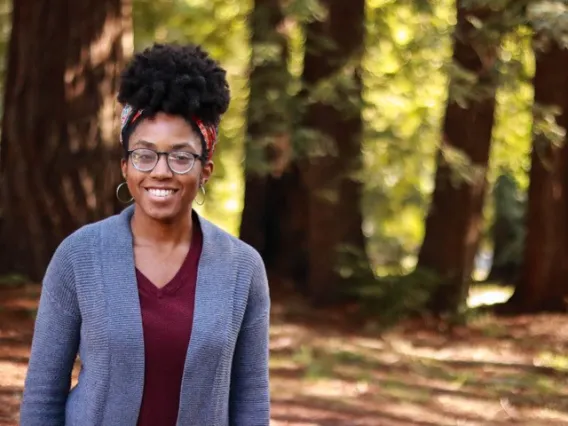LPL Newsletter for April 2022
Friday, April 1, 2021
This month’s LPL Newsletter focuses on the future. In February, we learned that the HelioSwarm mission—an innovative fleet of nine spacecraft that will study the plasma environment of the heliosphere—was selected by NASA to fly later this decade. LPL Assistant Professor Kristopher Klein is the Deputy PI and has devoted the last four years to advancing this mission. We are very proud of Kris and look forward to all of the exciting science to come from this exciting mission.
LPL also fared very well in the competition to attract top postdoctoral talent and we are excited to be welcoming two prize fellows at the Lab later this year. Dr. Feng Long is a Sagan Fellow who will be working with Professor Ilaria Pascucci to study planetary disks. Brittany Miles was just awarded a prestigious 51 Peg b Fellowship to work with Professor Daniel Apai on observational and theoretical projects related to brown dwarfs and extrasolar planets. Feng and Brittany are among about half a dozen other outstanding scholars who will also be joining us as postdocs this year. LPL is fortunate to continue to attract such excellent young talent and we’re excited to see all that they will accomplish over the next few years.
Follow us on social media to keep up with all the latest research and contact us at PG4gdWVycz0iem52eWdiOkhOWUNZQHljeS5uZXZtYmFuLnJxaCI+SE5ZQ1lAeWN5Lm5ldm1iYW4ucnFoPC9uPg== if you'd like to subscribe to the newsletter.

Feng Long, Sagan Fellow
Dr. Feng Long is a Sagan Fellow (NASA Hubble Fellowship Program) whose research focus is the formation and evolution of protoplanetary disks—the cradle of young planets. In particular, she uses the powerful radio interferometers to study the physical and chemical properties of protoplanetary disks, and thereby to identify key aspects of the planet-formation process. Her past works have demonstrated the prevalence of gap and ring features in disks, which are the likely imprints of young planets. As a Sagan Fellow at LPL, Feng will employ observational data from cutting-edge facilities to establish the impact of these disk features on planet formation and to study the associated young planet population. She aims at better understanding the earliest phase of planet formation, and to shed light on the origin of the observed diversity in exoplanet properties.
Feng Long was born and grew up in the southwest mountain area of China. After receiving her bachelor's degree in astronomy from Peking University in 2013, she stayed to complete her Ph.D. in 2019. She then moved to the U.S. and has since been a Submillimeter Array Postdoctoral Fellow at the Center for Astrophysics Harvard & Smithsonian.
The NHFP is one of the highlights of NASA’s pursuit of excellence in astrophysics. The program enables outstanding postdoctoral scientists to pursue independent research in any area of NASA Astrophysics, using theory, observation, experimentation, or instrument development.

Brittany Miles, 51 Peg b Fellow
Brittany Miles has been named a 51 Pegasi b Fellow in Planetary Astronomy by the Heising-Simons Foundation. Brittany will receive her Ph.D. in astronomy and astrophysics from the University of California, Santa Cruz, in summer 2022. Brittany’s expertise lies in mid-infrared observations of brown dwarfs—astronomical objects that share properties with both planets and stars. By placing unique constraints on the atmospheric structures of these cold objects, she provides a template for predicting and interpreting future direct images of cooler exoplanets. Her brown dwarf observations inform her work as an instrumentalist, where she retrofits and tests detector capabilities to support more precise characterization of exoplanets.
As a Peg b Fellow at UArizona, Brittany will continue her observations of brown dwarf atmospheres to obtain data on cloud composition and behavior. As co-principal investigator on a James Webb Space Telescope proposal, she will explore the coldest known brown dwarf to inspect possible water clouds and water vapor and infer how such features may behave on gas giant exoplanets. Brittany also plans to enhance the sensitivity of ground-based instruments to capture images of more Earth-like planets. Her work will be instrumental to the field as more large telescopes come online. The 51 Pegasi b Fellowship provides exceptional postdoctoral scientists with the opportunity to conduct theoretical, observational, and experimental research in planetary astronomy.
Established in 2017, the Heising-Simons Foundation 51 Pegasi b Fellowship is named for the first exoplanet discovered orbiting a Sun-like star.

HelioSwarm Will Help NASA Understand Solar Wind and Plasma
Most visible matter in the universe exists as plasma, and NASA has funded a new mission to study this state of matter that's rarely found on Earth.


